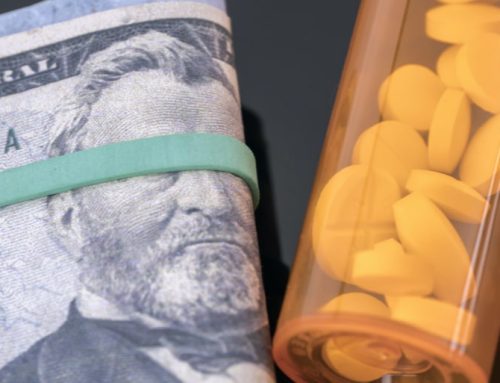Let’s say you are new to Medicare or, you’ve been on Medicare for a while and you realize you can barely afford it. Medicare – what you’ve waited for your whole life, is just too expensive. What do you do? There is good news, help is around the corner!
If you cannot afford Medicare, and you are low income, you can apply for a reduction in your costs through one of several different programs through Medicare or Medicaid. These programs help pay for deductibles, copays, coinsurance, and Medicare premiums. Your income determines the level of help that you can qualify for.
If you meet certain income requirements, you may be able to lower your costs.
Whether it is the high drug costs, or simply just the cost of Medicare itself, this article will help you understand what your options are and how to apply.
Today we will talk about the different programs available and how to qualify for them. If you are concerned about how much Medicare is, these programs might be for you, so keep reading to learn more.
Extra Help With Drug Costs
Extra Help is a program that helps pay for Part D prescription drug costs if you have limited income and resources.
Medicare Part D Plans are purchased from Medicare-approved private insurance companies to help cover your prescription medication costs.
There are different levels of Extra Help you may qualify for depending on your income and resources.
The Extra Help program can assist in paying for some or all of:
- Part D plan monthly premiums
- Deductibles
- Copayments or coinsurance
Continue reading to find out how to qualify for Extra Help.
Qualifying for Extra Help With Part D
If you have Medicare and your annual income and resources fall within certain limits, you may qualify for Extra Help.
For individuals, your yearly income must not exceed $20,625 (in 2022), and your resources must not exceed $15,510 (in 2022).
For married couples, your yearly income must not exceed $27,705 (in 2022), and your resources must not exceed $30,950 (in 2022).
These amounts change, to see the updated amounts, click here.
The following are not resources:
- Prepaid burial plot
- Your vehicle
- Your home
- Furniture, household, and personal items
If you think you fall under any of the above conditions, you can apply for Extra Help here.
Qualifying Automatically
You may automatically qualify for Extra Help with your prescription costs if:
- You have complete Medicaid coverage
- Medicaid helps pay your Part B monthly premium
- You receive Supplemental Security Income benefits (income assistance for those with disabilities)
Medicare will notify you if you no longer qualify for automatic eligibility and enrollment for the coming year.
Levels of Extra Help
There are four levels of Extra Help with your Part D monthly premium that you might qualify for:
- 100%
- 75%
- 50%
- 25%
Medicare will determine what level of Extra Help you qualify when you apply or are automatically eligible and enrolled.
The most you should be paying for generic drugs at any level of Extra Help is $3.70 (in 2022) or $9.20 (in 2022) for brand-name drugs.
If you feel you are paying too much, you can contact the insurance company that provides you with your Part D coverage.
Your insurance company may ask you to provide documentation from Medicare that states you qualify for Extra Help.

Help With Part B Premiums – Medicare Savings Programs
While Extra Help can assist in paying for Part D costs, there are other programs you may be eligible for that help with Part B costs.
Part B is outpatient medical coverage.
Your Part B monthly premium is income-based.
Depending on your income, there are different programs you may qualify for.
We talked about Part B in more detail in another post, which you can read here.
There are 3 Medicare Savings Programs that can help with Part B costs:
- Specified Low-Income Medicare Beneficiary Program
- Qualified Medicare Beneficiary Program
- Qualifying Individual Program
We will talk about each of these briefly below.
Specified Low-Income Medicare Beneficiary Program
If you have Part A and have limited income and resources, the Specified Low-Income Medicare Beneficiary Program can help pay your Part B monthly premiums.
For individuals, your monthly income must not exceed $1,379 (in 2022), and your resources must not exceed $8,400 (in 2022) to qualify.
Your monthly income must not exceed $1,851 (in 2022) for married couples, and your resources must not exceed $12,600 (in 2022).
Remember, these amounts change. Click here to see updates.
You can apply for this program by clicking on this link.
This is the most popular program to apply for and I would try and see if you qualify for this one first.
Qualified Medicare Beneficiary Program
Qualified Medicare Beneficiary Program can help pay for Part A and Part B premiums and additional costs like:
- Deductibles
- Copays
- Coinsurance amounts
We talked about Part A, Part B, and the additional costs mentioned above in other posts, which you can find using the search bar at the top of this page or on the home page.
For individuals, your monthly income must not exceed $1,153 (in 2022), and your resources must not exceed $8,400 (in 2022) to qualify.
Your monthly income must not exceed $1,546 (in 2022) for married couples, and your resources must not exceed $12,600 (in 2022).
These change all the time. Click here to see updated amounts.
The following are not resources:
- Prepaid burial plot
- Your vehicle
- Your home
- Furniture, household, and personal items
- $1,500 or less set aside for final expenses
Qualifying Individual Program
Unlike the program above, this one only helps pay Part B premiums and that’s it.
If you have Part A and limited income and resources, the Qualifying Individual Program can help pay your Part B monthly premiums.
This program is designed for low-income households that are Medicare-eligible. When you apply for this program, the state helps pay some of your out-of-pocket costs.
You must apply for this program each year.
Applications are on a first-come-first-served basis, and priority is to applicants who were approved the prior year.
For individuals, your monthly income must not exceed $1,549 (in 2022), and your resources must not exceed $8,400 (in 2022) to qualify.
Your monthly income must not exceed $2,080 (in 2022) for married couples, and your resources must not exceed $12,600 (in 2022). Updated amounts here.
Click on the link above to see if your state participates in this program. You’ll be able to click on the state to get their contact information.
Qualifying and Applying
You may qualify for any of the Medicare Savings Programs if you have or are eligible for Part A and meet the income and resource guidelines highlighted above.
If you feel you may qualify, you should contact your state Medicaid program to apply.
If you qualify for any of these Medicare Savings Programs, you automatically qualify for Part D Extra Help at some level.
Help with Part A premiums
In most cases, Part A does not cost anything when you first go on Medicare. As long as you’ve worked a minimum of 40 quarters, you’ll qualify for premium-free Part A.
However, there are some situations where a Medicare Beneficiary does not qualify which means that in order to get Part A, you’ll have to pay out of pocket.
Here is what Part A costs, Click here to read.
If you do not have the resources to pay for Part A, you may be able to qualify for premium-free Part A based on your income. This is know as Part A buy in.
Download this form (CLICK HERE), and follow the instructions on how to Participate in Medicare Part A buy-in.
You can always call us and we will be able to help.
Summary
Medicare has several costs associated with its different parts, such as monthly premiums, deductibles, copayments, and coinsurance amounts.
If your income and resources are limited, you may qualify for some of the programs we talked about today.
Out of the 3 programs mentioned, for the latter two options, you’ll need to contact your state Medicaid program directly.
It is undoubtedly worth applying and finding out if you qualify – the worst that can happen is they decline your application, but at least you will know you haven’t left free money on the table.
If you have any questions, use the search tool at the top of this page or on the home page.
Or, if you would like further detail on any of the topics we discussed, please fill out a contact form and submit your question.
If you prefer to speak by phone, call us at 888-209-5049.





Leave A Comment